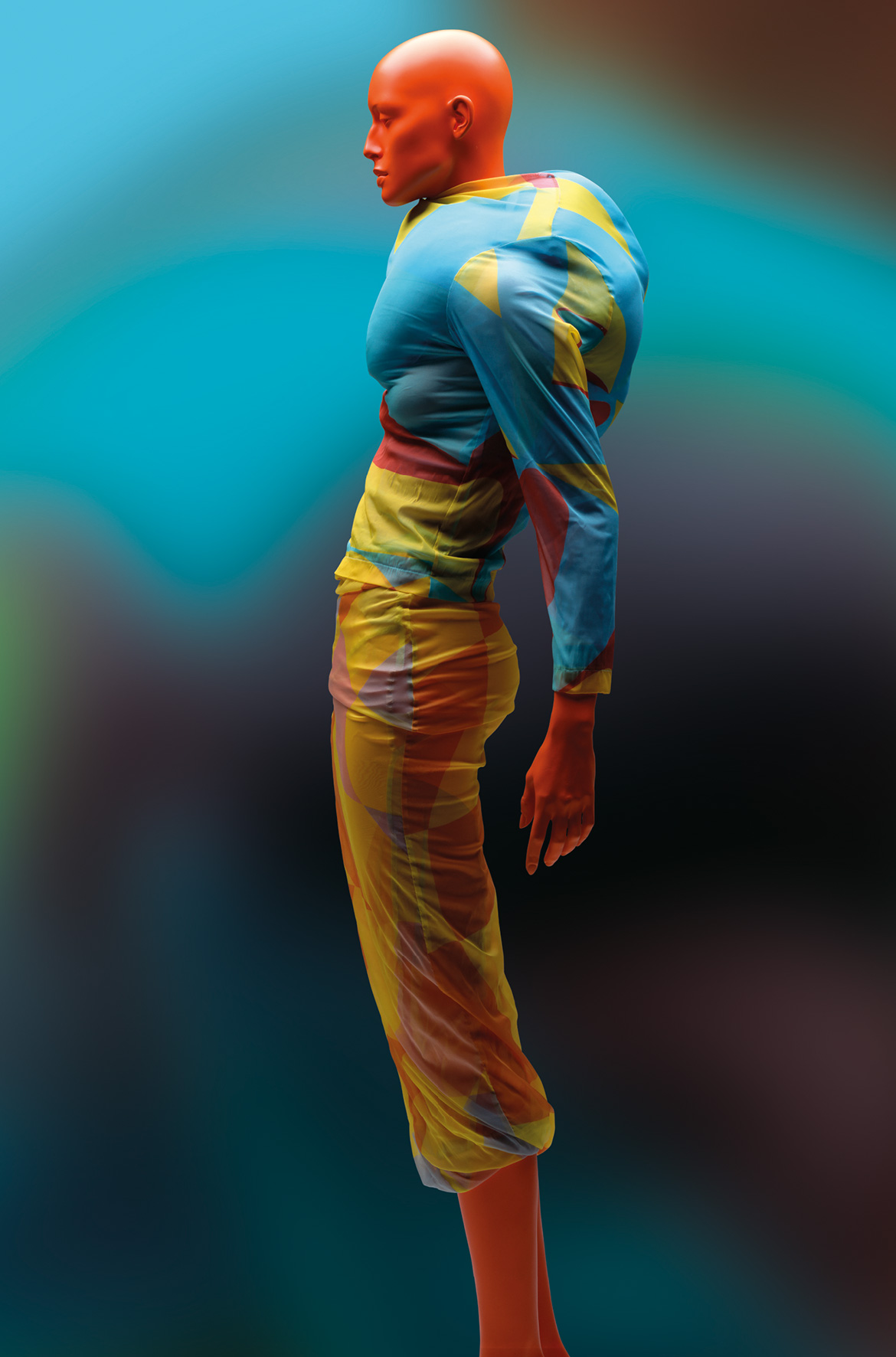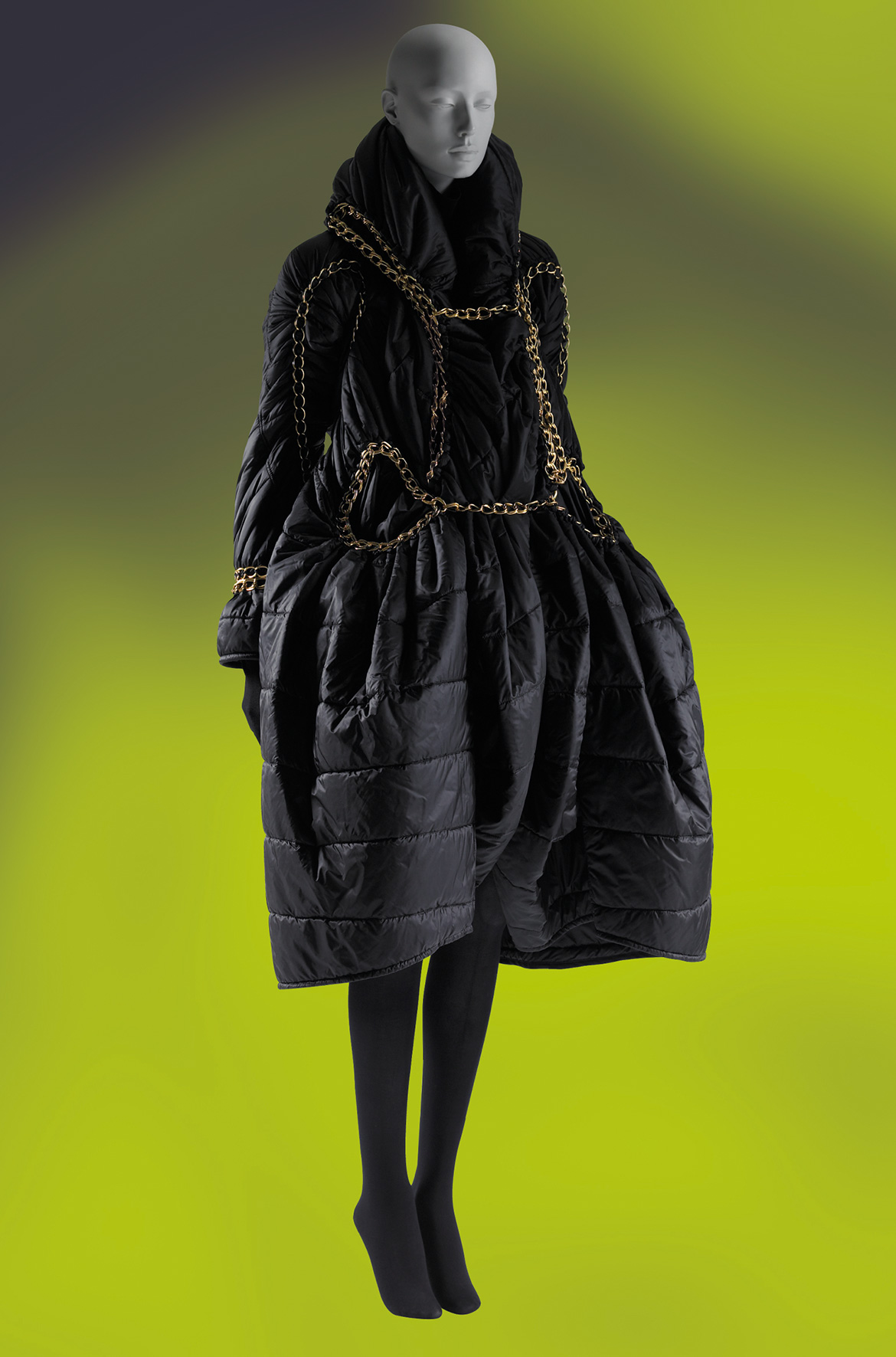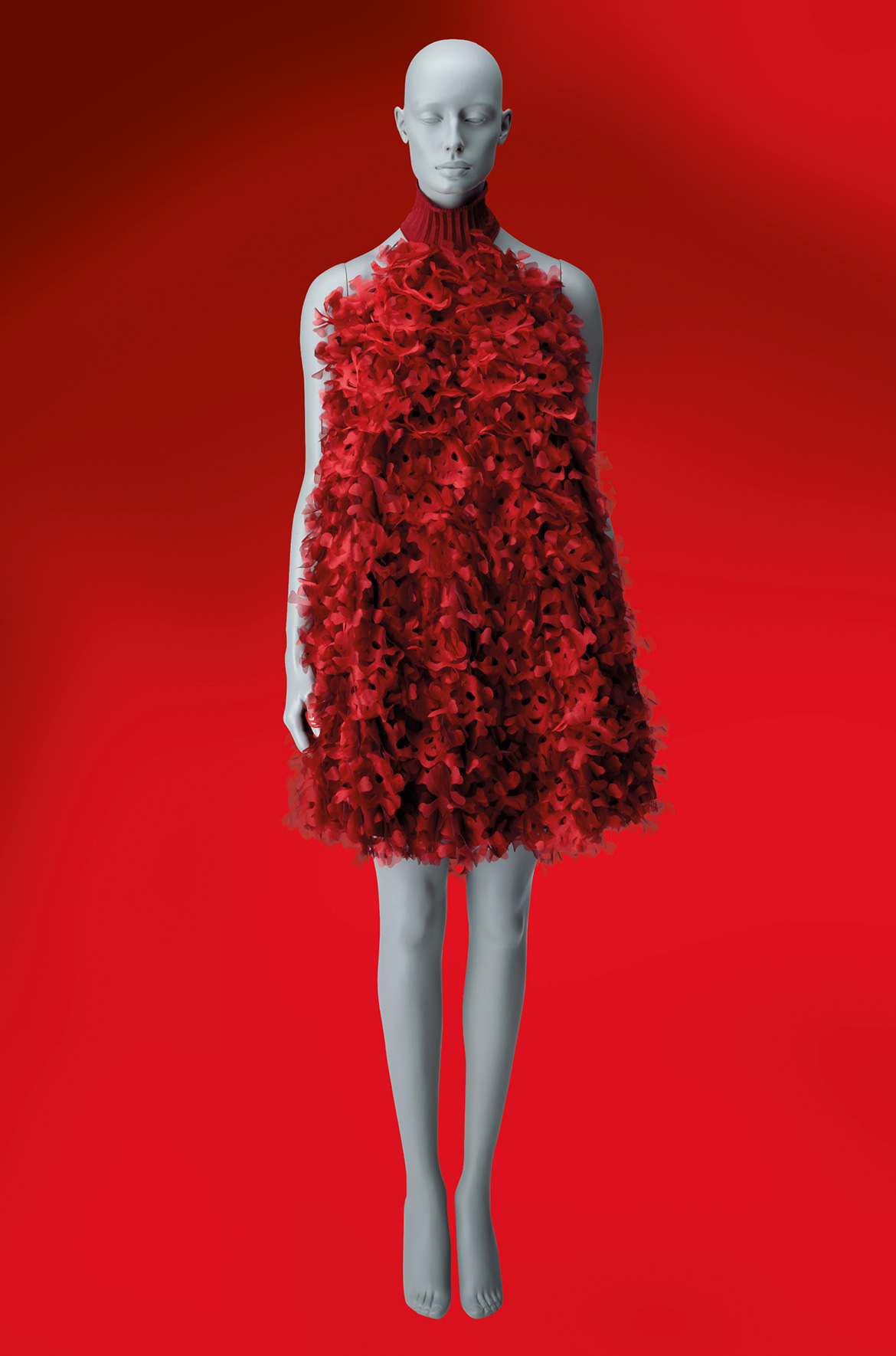‘Future Beauty: 30 Years of Japanese Fashion’ at the Gallery of Modern Art (GOMA) 1 November 2014 – 15 February 2015 explored the tremendous innovation of Japanese fashion designers from the early 1980s to the present. This was a rare opportunity to view over 100 unique garments drawn from the unparalleled collection of the Kyoto Costume Institute in Japan. Akiko Fukai, Director at the Kyoto Costume Institute and the curator of ‘Future Beauty’ takes us through the history of Japansese fashion.
Japanese design’s innate subversion of Western fashion norms transformed the international fashion world in the 1980s, not only because of its slick, fabric-oriented garments, but also because it heralded a way forward in fashion design across the globe. Here, director and exhibition curator Akiko Fukai outlines the history behind the Kyoto Costume Institute’s ‘30 Years of Japanese Fashion’
The history of fashion has long been associated with Western culture and informed by a Western perspective. Then, in the mid twentieth century, Japanese fashion designers triggered a dramatic change. Armed with a distinctive philosophy and aesthetic cultivated outside the West and clearly distinguishable from Western culture, Japanese designers delivered a multifaceted perspective to the world of fashion. The world had little choice but to recognise and accept Japanese fashion.
RELATED: Designing ‘Future Beauty’
RELATED: Behind the costume: Lady Gaga
SIGN UP NOW: Subscribe to QAGOMA Blog for the latest announcements, recent acquisitions, behind-the-scenes features, and artist stories.

But what exactly is Japanese fashion? For over 30 years, there has been much discourse on Japanese fashion, and it has made an indelible mark on Western fashion history. Nevertheless, there has never been a comprehensive examination and verification of the garments created by Japanese fashion designers. This exhibition originally stemmed from that realisation and represents a new evaluation of fashion from Japan. The Kyoto Costume Institute (KCI) was in an ideal position to carry out a verification based on actual garments in its collection, assembled as a result of KCI’s longterm vision.
It was not until the late twentieth century that Japanese fashion — which until then had relentlessly copied the West — finally displayed its uniqueness. Kenzo Takada, Issey Miyake, and Hanae Mori began to attract attention during the 1970s, setting the stage for Rei Kawakubo and Yohji Yamamoto to debut in Paris in 1981. Kawakubo’s and Yamamoto’s designs didn’t follow the existing trend and were completely devoid of the traditional aesthetics of Western fashion. Their distinctive garments triggered enormous controversy. Their fashion was described as avant-garde because they introduced a completely new concept in clothing. The term also referred to their exploration of the relationship between clothing and the body and the examination of women from a different perspective, as well as producing what could be interpreted as three-dimensional art from the viewpoint of the West at the time.
Re-examining the works of these Japanese designers, the traditional thinking and sensibility of Japanese culture is evident. This is manifested in the flat designs, the importance placed on the fabric and the wabi (simple and subdued) aesthetic which exudes from their achromatic garments.

Some observers were clear from the outset about the extent of the impact of these Japanese designs and on the methodology of Western fashion, as demonstrated by Hebe Dorsey’s statement: ‘Japanese fashion, which used to be a case of culture shock, is now a head-on clash of civilizations’.1 As though to corroborate this, Japanese fashion began to attract attention from the art world. Designers around the world gained a firm respect for their Japanese counterparts, and designs that had earlier been described as being ‘avant-garde’ entered the mainstream on a number of different levels. Japanese fashion went on to dismantle the symbolic nature of the Western aesthetic: it pushed open the heavy door of fashion as a Western cultural concept by transcending national boundaries, gender, and the framework of the conventional fashion system, paving the way for fashion to progress into the twenty-first century.
A further development in Japanese fashion emerged in the 2000s, with Tokyo fashion — inspired by pop culture — attracting younger generations, following on from interest both nationally and internationally in Japanese anime and manga from the mid 1990s. Representing ‘Cool Fashion’, Tokyo fashion is part of the contemporary Japanese culture branded ‘Cool Japan’. Some time will be required to accurately identify the true nature of this phenomenon.
‘Future Beauty: 30 Years of Japanese Fashion’ was originally organised in conjunction with the Barbican Art Gallery in London. It is the first major exhibition to comprehensively survey avant-garde Japanese fashion from the early 1980s to the present. The exhibition consists of four sections that feature the unique sensibility of Japanese design, alongside a showcase of six individual designers.

The first section, ‘In Praise of Shadows’, takes its name from an essay written by Juni’chiro Tanizaki in 1933, and represents the Japanese designers’ unique sensibility in the use of black. The intentional use of blacks — hitherto considered ascetic — was the antithesis of colour-dominated 1980s Western fashion, and shocked the whole industry. Black eventually became a byword for Japanese fashion and went on to become the colour of the late twentieth century.
‘Flatness’ addresses the issue of actually creating the garment, or how a flat piece of fabric can be used to clothe a three-dimensional body and examines the unique approach adopted by the Japanese. Taking the kimono as an example, instead of cutting the fabric, the two-dimensional material is arranged so that it covers the body, unlike garments in the West, which are designed to fit the contours of the body. When the fabric is arranged, it creates an ambiguous space known as ma, not quite fitting the body. This design concept has been a consistent part of Issey Miyake’s designs since ‘A Piece of Cloth’ in 1976.2 Arranging the fabric so that the clothing moves away from the body to create an unpredictable shape, obvious in Kawakubo’s designs of the early 1980s, also allows the clothing to transcend its perceived limitations. In other words, these garments are extremely abstract. Similarly Japanese designers have also applied the concept of origami to clothing.
The ‘Tradition and Innovation’ section explores the greatest characteristic of Japanese fashion, which is the designers’ fine sensibility when it comes to fabric, and it was this that attracted worldwide acclaim from the beginning. Fabric is an absolutely essential element in delivering a new look, texture and shape. Japanese designers are well versed in this through their knowledge and understanding of kimono. Such designers already have their own ideas for fabric production when embarking on a new design. This contrasts with Western designers, who are more likely to choose their fabric from what textile producers make available.

Finally, the ‘Cool Japan’ section examines the symbiotic relationship between street style, popular culture and high fashion. It features works by Jun Takahashi for Undercover and TAO, including ‘Lolita’ fashion. Following these four sections, the exhibition presents individual designers’ past and recent work alongside new pieces at the cutting edge of Japanese fashion today.
From its initial opening in London, ‘Future Beauty’ has attracted extensive media attention and has generated much new interest.3 The exhibition toured to Haus der Kunst (Munich), the Seattle Art Museum, the Peabody Essex Museum (Salem, USA), the Museum of Contemporary Art (Tokyo), and the National Museum of Modern Art (Kyoto). Its final destination is the Gallery of Modern Art, Brisbane.
Akiko Fukai delves into the history and development of Future Beauty
Akiko Fukai is Director at the Kyoto Costume Institute and the curator of ‘Future Beauty: 30 Years of Japanese Fashion’, at GOMA 1 November 2014 – 15 February 2015.
Endnotes
1 Hebe Dorsey, ‘The Japanese and Paris: Couture Clash, Head-On’, International Herald Tribune, 14 October 1983.
2 ‘The Issey Miyake Collection is founded in the philosophy of clothing made from “a Piece of Cloth”, a concept which explores not only the relationship between the body and clothing, but also the space that is born between them. The philosophy has evolved and grown as have Miyake’s interests always founded in innovative clothing combined with modern research and development.’ http://mds.isseymiyake.com/mds/en/collection/, viewed 3 July 2014.
3 The exhibition has attracted extensive media acclaim, including by renowned fashion critic and editor Suzy Menkes (‘In praise of shadows and light’, New York Times, 22 November 2010). Also, see Christopher Muther, ‘Peabody Essex reveals Japanese fashion’s avant-garde beauty’, Boston Globe, 20 November 2013; and Laura Jacobs, ‘Sensational and cerebral’, Wall Street Journal, 6 December 2013.
Subscribe to YouTube to go behind-the-scenes / See what’s on in Brisbane / Hear artists tell their stories / Read about your Australian Collection
#QAGOMA

